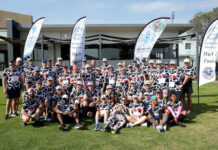When exactly the complete obliteration of a muscle came to be considered a good thing, is not really known, but the idea of ‘no pain-no gain’ now pervades the sports and fitness industry. This is according to Sean Redpath, owner of Redway Pilates.
Having a strong core has also become synonymous with having a sixpack and regularly enduring gruelling abdominal workouts. While this logic may have its place in some body-building circles, it is of little to no value to the layperson who is exercising for general strength, health and fitness, and indeed the same holds true for most athletes and performing artists.
While it is a fact that there may be some discomfort from exercising muscles that have not been worked to a certain intensity before, this discomfort and soreness should be temporary and after regularly exercising the same muscles, this should no longer occur. The problem is we have come to equate pain and hardship with progress: if we are not struggling and in pain, we cannot be doing it properly and we surely cannot be getting any real benefit. This could not be further from the truth.
Constantly being in pain after training is not a good thing, it is rather a sign that we are working against our body, instead of with it. We have not understood how our body is designed to operate, and we are forcing it to work in ways that go against its mechanical design, which leads to muscle strain, and over time, more serious damage to the various bodily systems.
Intricately linked to this fallacious idea is another equally destructive myth: that the more effort you exert, the better your results will be. To demonstrate the falseness of such a claim, simply watch a well-trained tightrope walker walking the rope. You will see that his face is calm and composed, and likewise his whole body is stripped of all unnecessary tensions. This is because even the slightest bit of unnecessary tension will interfere with his balance.
In fact, displays of unnecessary tension (think a powerlifter screwing up his face, grunting, and popping the veins in his neck) are no more than a sign of poor technique, and yet we are continuously fed images of athletes and artists with painful expressions on their faces as if this were to be admired and emulated.
What we need to learn to do is train smart, not hard. Training smart means using your intelligence to work in such a way that you use only the amount of effort needed for the task at hand – that you work in accordance with the design of your body so that the correct muscles are recruited. Understanding the body and how it is designed to operate is crucial to being able to operate it optimally. To be a good racing car driver, you need to know how a racing car is designed to function and you must then learn how to drive it to get the best performance out of it. Working with the body is no different.
REDWAY PILATES
+27 (78) 548 3733
sean@redwaypilates.com
redwaypilates.com









